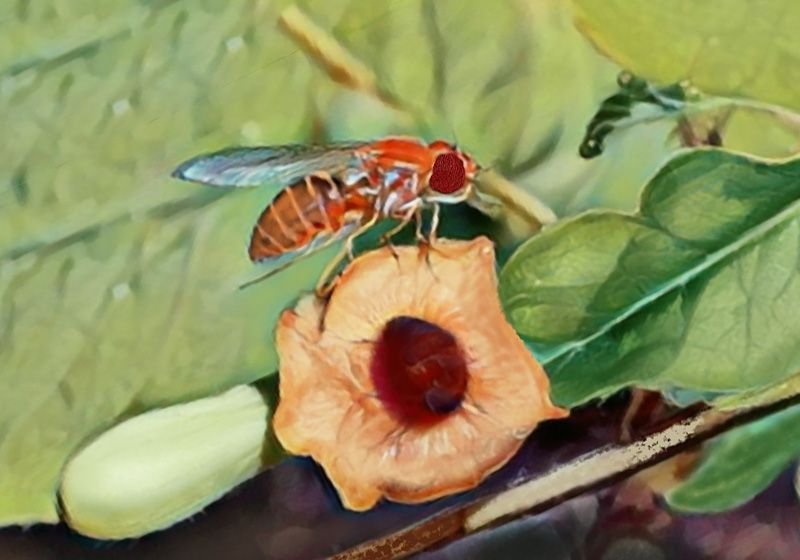For thousands of years, humans likely learned about herbal remedies by observing other animals’ behavior. The Navajo people credit brown bears with leading them to the osha root (Ligusticum porteri), which they use to relieve headaches, treat infections, or chase insects away.1 An Asian legend claims that by watching mongooses chew Rauvolfia serpentina leaves before fighting with cobras, humans discovered its use as a snake-bite antidote.2 While it’s not possible to verify these folk stories, their abundance suggest that animal self-medication has informed human medicinal knowledge.
Studying fruit flies in the lab could also inspire novel cancer drugs, according to a new study in Current Biology.3 A team led by University of California, Santa Barbara neuroscientist Craig Montell found that flies with gut tumors chose to consume a particular bitter compound more often than healthy flies, which normally rejected it. Ingesting this compound had strong, sustained antitumor effects in these flies, hinting at a potential self-medication strategy that could guide drug discovery.
Given that flies rarely develop cancer due to their short lifespans, the team artificially created three cancer-like models to test whether tumors influenced the flies’ preference for various compounds. Using three different transgenes, they induced the insects’ intestinal stem cells to proliferate and develop tumor-like characteristics. The researchers then allowed tumor-bearing and healthy flies to choose between sucrose alone or a mixture of sucrose and one of four bitter compounds, including caffeine and the botanical compound aristolochic acid (ARI). By measuring how often flies fed on sucrose alone or the bitter meal option, the team determined how strongly they preferred one or the other.
Gut tumors did not alter the flies’ rejection of three of these aversive compounds, but they did change their taste preference for ARI. Two of the fly cancer models now showed no preference towards sucrose alone; they fed on both dish choices with the same frequency. The third strain became even more attracted to ARI than to sucrose alone. Notably, when the researchers assessed the impact of ARI on tumors, they found that it suppressed cell proliferation. Even consuming it for two days led to a prolonged suppression of gut tumor growth.
Montell and his colleagues then explored the neural mechanisms behind this shift in taste. The tumor could be altering how the flies’ bitter-sensing gustatory receptor neurons respond to ARI, or the change might occur in the brain after this interaction, or both. To test the first hypothesis, the team conducted electrophysiological experiments on the taste-sensing cells on the flies’ proboscises and legs. They found that these peripheral neurons responded no differently to ARI in gut tumor-bearing flies than in control ones. Thus, the change in taste preference likely occurs in the central nervous system, though the details are still unknown.
“[The findings] suggest there is something about the cancer that’s altering the brain in a way that this compound no longer is aversive,” said Jeremy Borniger, a cancer neuroscientist at Cold Spring Harbor Laboratory who did not participate in the present study. “The next step is…to identify which neurons or which groups of neurons in the brain are regulating this process—how does the tumor alter these cells so that they receive the same signals from the taste of this compound and then interpret it differently?”
Unfortunately, despite its tumor-suppressing effects, ARI is too toxic to the kidneys and liver to be developed into a drug. However, the study’s approach may open promising avenues for discovering medical compounds. For Montell, that is actually the most exciting outcome of this work: It establishes Drosophila as an animal model for self-medication and, therefore as a system to screen thousands of molecules for potential novel drugs against gastrointestinal carcinomas. “The initial screen would be looking for chemicals for which [gut tumor-bearing flies] have an increased preference. . .and then, of those that you find, which ones actually increase their lifespan,” he explained. While scientists have previously used fruit flies for screening cancer drugs, Montell noted that, “Conceptually, this would be different because it would be using self-medication as the primary screen, so people have not done that before.”4

